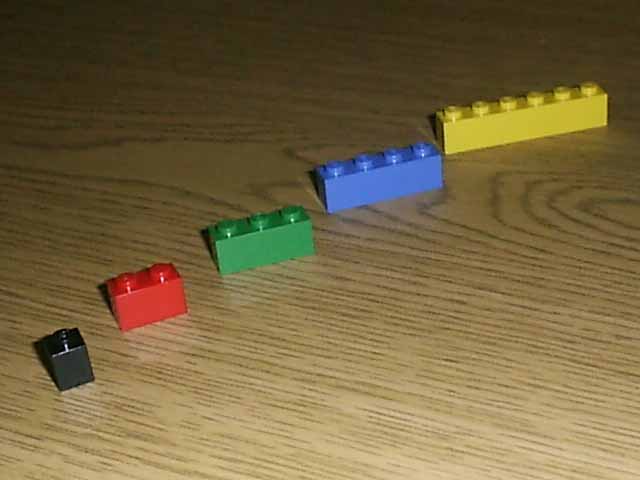
Lego bricks come in many sizes. For this investigation we will use blocks of the same width (1 Lego unit) but of varying lengths (1,2,3,4 and 6 Lego units).
To start the investigation, stand one of each length of block on a tabletop with the Lego connector side up (as in the picture). We then make our first observation:
A single Lego brick can stand on a flat surface.
Even though this is a very simple observation (also known as a trivial observation), we still want to record our results. Using the graph paper, draw a picture of each 'structure' as seen from the long side, shading in a block on the graph paper for each Lego unit, for example:

1x1 (one-by-one) brick STANDS |

2x1 (two-by-one) brick STANDS |

3x1 (three-by-one) brick STANDS |

4x1 (four-by-one) brick STANDS |

6x1 (six-by-one) brick STANDS |
You can also use the pre-drawn simple structure graphs to record your data, if you prefer.
We now have a graphical representation of our experimental data. For each structure we make, we will draw a similar graph, and record whether the structure STANDS or TOPPLES. In the cases so far, record that each one-brick 'structure' STANDS. (As we shall see, it "takes two to TOPPLE!")
| On to page 2! |